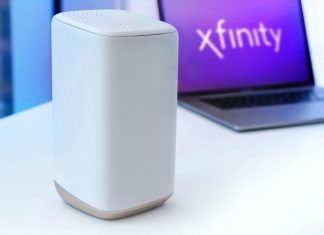Really often, startup companies want to speed up the process and miss the stage of creating and testing MVP – a minimum viable product. This is a test version that has all essential features to see whether the product needs improvement and to gather users’ feedback. Startup MVP development is more economical in terms of money and time than developing a whole product from scratch. But the benefits of making MVP are very valuable, especially for companies that only start their journey. If you find yourself new to MVP development, don’t hesitate to read this article!
Why Do You Need To Develop An MVP?
While you are thinking about developing a minimum viable product, you lose many opportunities. This is not only a good start for your business project but also a useful experience because, according to feedback from MVP users, you will continue to improve and create a ready-made product. Let’s see what you can miss if you think MVP development is not worth paying attention to.
- A clear understanding of your product. You can create as many conceptions and visions of your product as you want, but until you try it with your own hands, you will not be able to evaluate it.
- Feedback from first users. The most valuable feedback you can get is from who will use your product – your customers. Based on this, you will be able to improve the MVP and get the perfect version of the product.
- A clear image of users’ needs. As your purpose is to satisfy the clients with your service, by releasing MVP, you can get a clear vision of what they need.
- Ability to improve. MVP development focuses on finding out what is useful and what needs to be improved. And it is extremely important to fix everything before you release your final version.
What Is The Difference Between MVP And Final Product?
MVP development and final product development have nothing in common. When building your minimum viable product, you focus on creating core functions without any complex features. The main purpose of investing in MVP development is to see whether your project is in demand among users. It often happens that startups develop a product whose value is not as great as expected. And if they created a test version, i.e., MVP, such a mistake could be avoided.
What Are The Steps To Build An MVP?
Just because you’re creating a trial version of a product doesn’t mean that MVP development is easy. As in every project, it is necessary to follow a certain sequence of steps to achieve the result. Here’s what you need to do to develop an MVP.
Find Out Users’ Needs
To create a competitive product, you must first study the market. Do market research. See what industries and products people need. Even if you create a technically and visually perfect project, but it will not be in demand in the market, your efforts will not pay off. Thus you have to watch out for all the new trends.
Draw A User’s Journey
If you want to satisfy the customers, put yourself in their shoes. Imagine yourself a user of your website or application. Consider your project from the client’s point of view: from opening to purchase. See all the possible ways the client can go and make them as simple as possible.
Define The Features
When you know what your users want to get, you can plan on defining the features of your MVP. When choosing the right features, ask yourself what they will do for your users. Divide them by priority and highlight the most important because, in MVP development, it is important to focus on the core functionality.
Launch Your MVP
Once you have identified the important aspects that should be in your MVP, start developing it. At this stage, it is important to remember that you should not try to create the perfect product. The main purpose of the test version is a short period of time and a relatively small investment. The faster you can show your MVP to users, the faster you get feedback and improve the next version of the product.
What Are The Qualities Of A Good MVP?
Although MVP is considered a trial version of the product, it is important to spare no effort to make it high quality. Even if it has several features, but they are built correctly, users will already be delighted with this than with a low-quality set of modern features. Make sure that your MVP has the following characteristics.
Clear Orientation
In MVP development, startups should focus on a specific audience. This means that such a product should be suitable for a particular niche, not be suitable for everyone. Therefore, a good MVP has a specific ideal client, his needs, and your services that can meet these needs.
Ability To Grant Feedback
A good MVP gathers feedback from users. Being its primary function, a test version should collect customers’ thoughts about your product and the whole idea. Feedback is especially valuable from the target audience, which in the future will be your customer base. Examples of good feedback collection are quizzes, questionnaires, various forms, and anything that will help you gather as much information as possible.
Ability To Catch Users
If your MVP attracts new visitors and stays with you in your further journey, you can be proud yourself. Although it is quite hard to keep users with only a few existing features, high-quality minimum viable products can do it even at this early stage.
Testing As A Priority
Good MVP should be quick in release and cost-efficient. With this kind of initial product version, you should test your assumptions and hypothesis regarding your business idea. Revenue is not what you want to expect from an MVP. Of course, you should provide some charges for using your services, but they are not as valuable as the understanding of what to do with your product in the future.









![[LISTS] Best Chat GPT App for iPhone – Can You Handle the Suspense? Best Chat GPT App for iPhone](https://www.techinpost.com/wp-content/uploads/Best-Chat-GPT-App-for-iPhone-324x235.png)